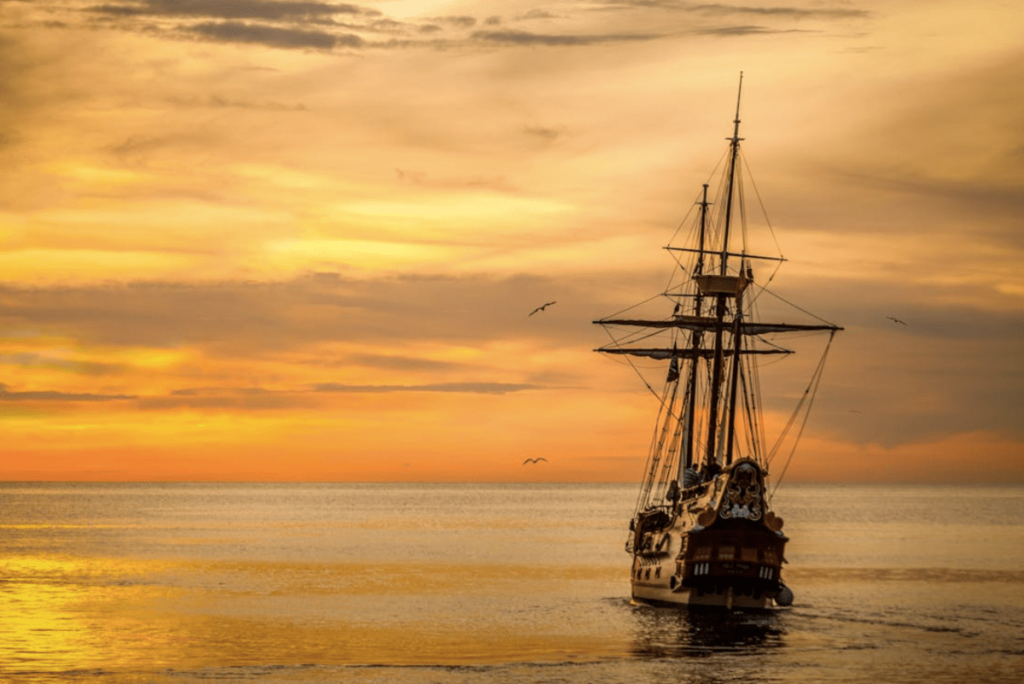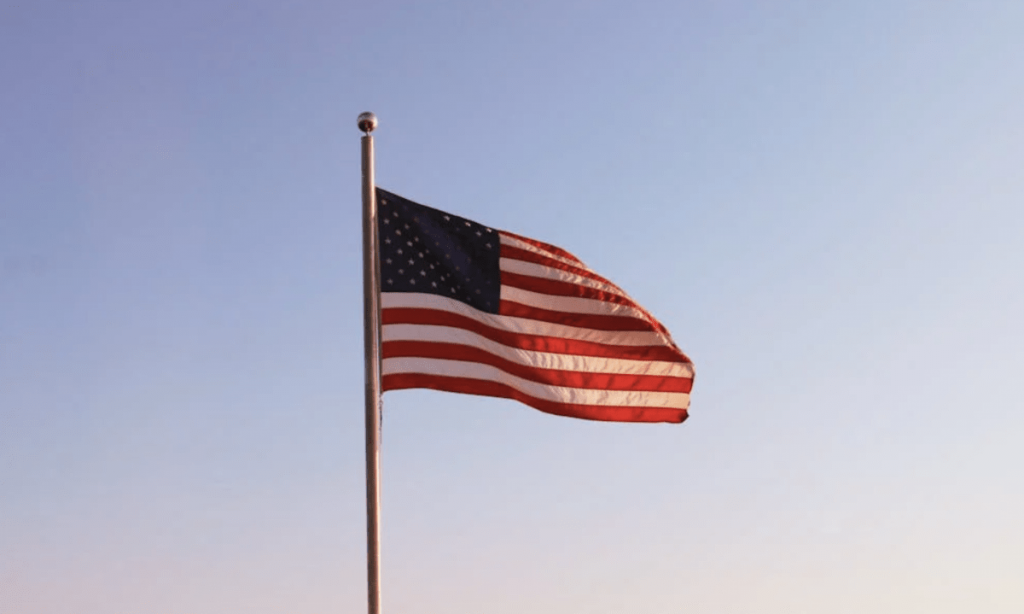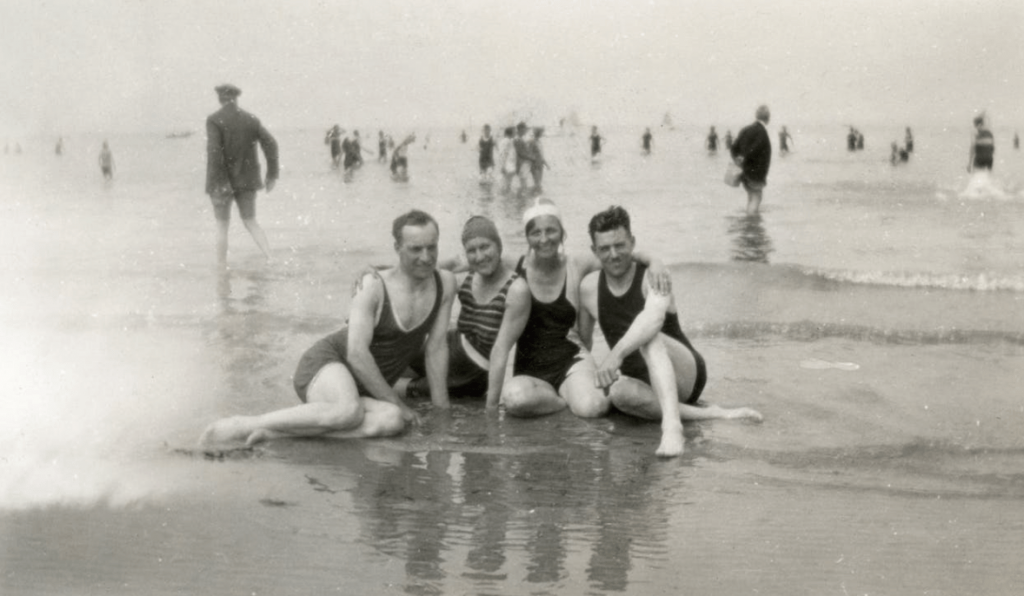The City of Five Flags: A History of Pensacola & Pensacola Beach
One of the oldest settlements in the US, with 450 years of history, Pensacola, in the northwestern part of Florida on the Panhandle, offers much more than sparkling beaches — the city has a rich past that’s intertwined with the stories of Native American tribes, European colonialists and even pirates.
Pensacola is nicknamed “The City of Five Flags” because it has been ruled by five different governments throughout its long history: Spain, France, Great Britain, the United States, and the Confederate States of America during the Civil War, all of which left their mark.
The city is also known as the “Cradle of Naval Aviation” because the very first US Navy pilots learned to fly here in 1914. Today, continuing the legacy, the famous Blue Angels even call Pensacola home, wowing crowds with their amazing flying skills!
These days, most people who visit the region come to relax on Pensacola Beach. Whether you want a cute beach cottage or a fancy resort, Pensacola and Pensacola Beach have it all. But how did this historic town turn into a vacation hotspot?
This blog will take you on a fun trip through Pensacola’s history, discussing important milestones from its exciting past to its sunny present. By the end, you’ll know all about this special place and have some cool facts to share with your friends on your next Pensacola trip!
Let’s dive in!
A Quick and Fun Timeline of Pensacola’s History
Before the Fancy Hotels and Rentals: Who Lived in Pensacola First?
For thousands of years, Native American tribes called Pensacola and its region home. They lived by fishing the Gulf waters, farming the land, and building villages along the coast. In fact, Pensacola is named after the Panzacola Indian tribe that thrived here for centuries before European colonization. It was all very paradise-like, as you can imagine.

1559: The Spanish show up and things get shaky
Spanish conquistadors arrive in Pensacola under Tristán de Luna y Arellano, brimming with visions of a grand new colony. However, harsh weather, which, unlike the natives, they were not used to, forced them to abandon their settlement just two years later.
It was not before the late 17th century, around 1698, that the Spanish returned to establish the permanent settlement that would become the Pensacola we know today. This new settlement was built with a stronger focus on military defense and strategic importance. Pensacola becomes a bustling port city.
Sadly, the Spanish disrupted the lives of the indigenous people already living in the area. Diseases brought by the Europeans likely caused sickness and death among the native population.
France Says “Bonjour” and then a swift “Au revoir”
In 1719, the French captured Pensacola from the Spanish and renamed it Fort Louis. However, their control only lasted for about three years because of the Spanish regaining control soon after.
History repeats itself, now with the British
Spain loses again and wins again. In 1763, the British took Pensacola in a war. After designating Pensacola the capital of the British West Florida colony, they established a trading post and strengthened Fort Barrancas.
But, as you guessed, Spain gets it back eight years later. Lots of back-and-forth!
Woven from threads of many cultures
The European arrival wasn’t without its dark side, as enslaved people from Africa were brought to the region, at times reaching 50% of Florida’s population.
But Pensacola also became a place of unexpected connection. Amidst the turmoil, a unique Creole culture emerged. People of African descent, French, Spanish, and indigenous tribes mingled and intermarried, defying rigid social structures.
Though the circumstances of this cultural exchange weren’t always positive, it undeniably led to Pensacola’s rich diversity, a legacy that lives on.

1819: Big Change! America takes over
1819 marked a significant turning point in Pensacola’s history with the signing of an agreement between the United States and Spain that resulted in Spain ceding Florida, including Pensacola, to the United States for a sum of $5 million.
It was only then that English became the dominant language, but Spanish influence remained clear in Pensacola’s architecture, traditions, and cuisine.
The transition to American rule wasn’t without its challenges, though. Some residents, particularly those loyal to the Spanish crown, didn’t take it well.
1821: Pensacola Gets Promoted (Briefly)
Following the acquisition of Florida in 1819, Pensacola was chosen as the new territory’s capital, a decision influenced by its existing infrastructure, strategic location, and established colonial government buildings.
However, this promotion was a quick one; Pensacola held the title for only three years. Tallahassee, positioned more centrally within the state, was then chosen as a better choice for the capital.
1861 A nation (and a city) divided
The simmering tensions between the northern and southern states over slavery exploded in 1861, leading to the outbreak of the American Civil War. Florida, aligned with the Confederacy, seceded from the Union.
Pensacola, with its strategic location and federal forts, became a key target for both sides. The Civil War exposed the deep divisions within Pensacola’s population. Some residents supported the Confederacy, while others remained loyal to the Union.

Early 1900s: Time for Vacations!
The late 1800s marked a period of resurgence for Pensacola. After the devastation of the Civil War, the city began to rebuild and rediscover its economic potential. Fishing, a long-standing industry, experienced a revival, and a new industry emerged: tourism.
Pensacola Beach’s pristine white sand beaches and emerald waters spread beyond the region. Visitors flocked to experience the beauty of the barrier island, drawn by its natural splendor and a slower pace of life. This growing interest in leisure travel spurred a transformation.
The early 1900s saw a boom in hotel and resort construction. Restaurants, shops, and entertainment venues catered to visitors. This shift towards tourism helped establish Pensacola Beach as a premier vacation destination, a reputation that continues to this day.
The city takes flight
Pensacola’s significance extended beyond leisure. The establishment of the Pensacola Naval Air Station in 1914 marked a turning point. World War I fueled advancements in aviation technology, and Pensacola, with its ideal weather and vast training airspace, became a crucial training ground for America’s first generation of naval pilots.
As the dark clouds of World War II gathered, Pensacola’s role became even more critical. The demands on naval aviation training skyrocketed. The city mobilized, expanding existing facilities and constructing new ones to accommodate the influx of aspiring pilots, navigators, and aviation crews.

The Blue Angels take over the skies
In 1946, another significant chapter began in Pensacola’s aviation story. The U.S. Navy Flight Demonstration Team, later known as the Blue Angels, was established. Composed of elite pilots and support personnel, the Blue Angels took to the skies, showcasing the precision, teamwork, and awe-inspiring capabilities of naval aviation.
A city transformed
Pensacola emerged from the war forever changed. Its dual identity — a beach paradise and a center for naval aviation – flourished in the post-war era. Tourists flocked back to its shores, while military training continued to play a vital role in the city’s development.
Thriving Nature, Thriving City
Beyond its history of changing flags and military significance, of late, Pensacola’s story is increasingly defined by a commitment to environmental protection. Recognizing the importance of the ecosystems that have sustained the city for centuries, Pensacola actively works to conserve its natural beauty.
Collaborative research, monitoring programs, restoration projects, and public education initiatives all play a role. From safeguarding barrier islands to promoting sustainable tourism practices, the city embraces its role as a responsible steward.
This dedication to conservation ensures Pensacola’s vibrant ecosystems and breathtaking landscapes continue to thrive for future generations.
Historical Sites and Activities to Enjoy When You Visit Pensacola
Now that you know the incredible journey of Pensacola and Pensacola Beach to become what they are today, let’s explore some of the key sites that breathe this history and where you can see it all happen.
Here are the main ones:
Fort Barrancas National Historic Site
This 18th-century Spanish fort played a pivotal role in the defense of Pensacola throughout history. Visitors can explore the fort grounds, climb the bastions for stunning views of the harbor, and learn about the fort’s role in the American Civil War.
T.T. Wentworth Jr. Florida State Museum
This museum offers a comprehensive look at Pensacola’s history, from its indigenous inhabitants to its modern development. Explore exhibits on the city’s role in the Civil War, the development of Naval Aviation, and the area’s unique ecology.
Pensacola Historic District
Stroll through the charming Pensacola Historic District, lined with beautifully preserved 19th-century buildings. Admire the architecture, browse the shops, and learn about the city’s vibrant past.
Historic Pensacola Village
This living history museum brings Pensacola’s past to life. Costumed interpreters demonstrate 19th-century crafts, trades, and daily life. Explore historic houses, a blacksmith shop, a print shop, and more.
Naval Aviation Museum
Delve into the rich history of naval aviation at this expansive museum. See iconic Navy aircraft, from the Wright Flyer to the F-18 Super Hornet. Flight simulators, interactive exhibits, and a giant screen theater make this a fun and educational experience.
Bonus: See the Blue Angels in Action!
Pensacola is home to the world-famous Blue Angels, the elite flight demonstration squadron of the United States Navy. Catch a practice session or an air show to witness their awe-inspiring aerobatic maneuvers.

A History of Pensacola & Pensacola Beach
While Pensacola Beach might be known for its sugar-white sand and turquoise waters today, its story goes much deeper. Pensacola itself boasts a rich and fascinating history that adds another dimension to your beach vacation. Understanding this past will surely deepen your appreciation for this unique place.
Want more tips on Pensacola, Pensacola Beach, and the Gulf Coast of Florida? Then head to our destination blog! We’ve written about a variety of topics, including the top kid-friendly spots, the best places to grab breakfast, and even tips for a perfect beach day. It’s all there, and more content is coming, so stay tuned.
Where to stay during your visit to the Gulf Coast?
Looking for an extra idea to make the most of your weekend on the Gulf Coast? Booking your stay with Luxury Coastal Vacations. We offer the finest selection of luxury rentals on the Gulf Coast, spanning Alabama and Florida.
When you choose to stay in one of our homes or condos, you can expect a 5-star experience that you’ll cherish forever. Browse through our options and discover what awaits you on the beautiful Gulf Coast.
